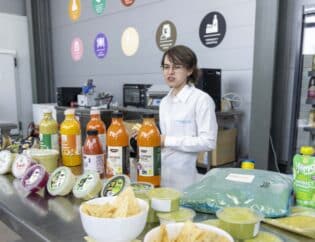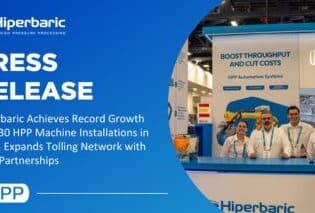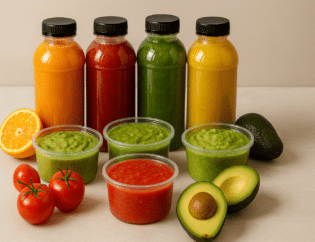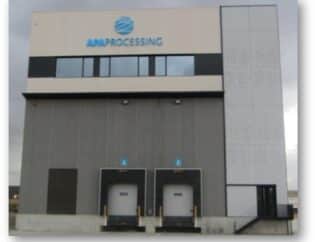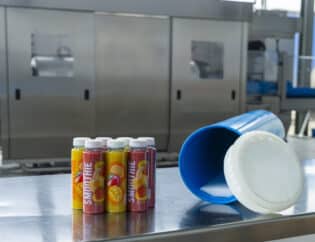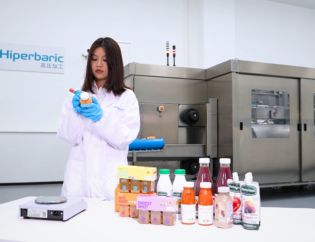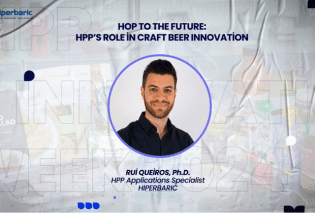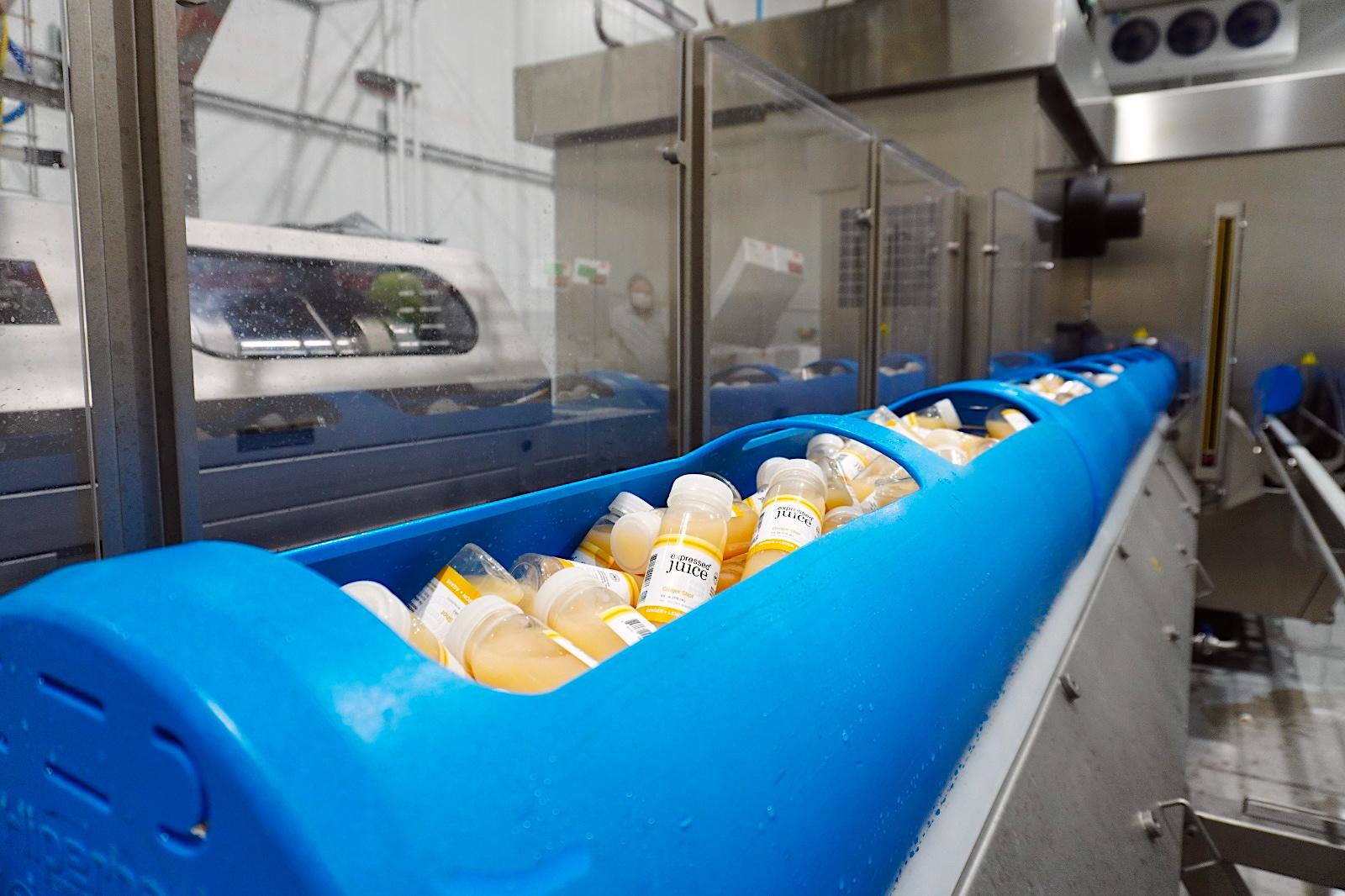
High Pressure Processing (HPP) and Pulsed Electric Fields (PEF) are two innovative nonthermal food processing technologies that enhance food safety and extend shelf life while preserving nutritional and sensory qualities. HPP employs intense hydrostatic pressure to inactivate microbes, delivering strong long-term microbial stability and excellent nutrient and color retention. PEF uses short, high-voltage pulses, also achieving comparable nutrient retention, but can cause heating. Both techniques surpass traditional thermal pasteurization in preserving nutrients, with HPP showing greater robustness for maintaining long-term quality. HPP is widely adopted in the food industry, whereas PEF, though promising for continuous processing, still faces technical and commercial barriers.
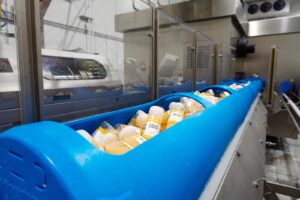
Advancements in nonthermal food processing technologies have opened new avenues for enhancing food safety and extending shelf life without compromising nutritional and sensory qualities. Among these innovative methods, High Pressure Processing (HPP) and Pulsed Electric Fields (PEF) have gained significant attention due to their effectiveness in microbial inactivation and minimal impact on product quality. HPP involves the application of hydrostatic pressure up to 6000 bar (87,000 psi), applied isostatically to pre-packaged foods. This pressure is transmitted uniformly in all directions, regardless of the food’s size, shape, or composition. HPP is typically a batch process, where products are loaded into a pressure vessel, filled with a pressure-transmitting fluid (water), and held at the desired pressure for a specific duration. PEF, on the other hand, operates by applying high-intensity electric fields, typically up to 40 kV/cm, in short pulses lasting 5 to 30 microseconds. PEF systems usually involve continuous flow treatment chambers with electrodes through which the product passes while receiving the electric pulses. However, a limitation of PEF is the unintended heating effect (ohmic heating) that can occur during treatment, potentially leading to temperature increase and possibly affecting product quality.
Microbial Inactivation
HPP and PEF technologies have both demonstrated strong efficacy in microbial inactivation, achieving reductions in microbial counts to below detectable levels immediately after treatment. In a study with orange juice, this microbial stability was sustained for over two months under refrigerated storage at 4 °C (32 °F), confirming that both nonthermal methods can reduce and control microorganisms. However, comparative studies suggest that HPP may offer greater long-term microbial stability under certain conditions. For example, in another study, when applied to strawberry juice under equivalent processing parameters, HPP maintained microbial counts below 2 log CFU/mL for over 42+ days, whereas PEF-treated samples showed microbial regrowth after 28 days (Figure 1). These results highlight HPP enhanced robustness in preserving microbial safety and extending shelf life in some products.

Quality Preservation
Nutritional Retention
When comparing the impact of HPP and PEF on the phytochemical profile of fruit juices, both nonthermal methods outperform traditional thermal pasteurization, though they offer distinct advantages. In the previously mentioned study with strawberry juice, both technologies yielded very similar results. PEF resulted in a slightly greater immediate increase in total phenolic content (5%) and total anthocyanins (17%) compared to HPP (4% and 15%, respectively), while both treatments enhanced antioxidant activity by approximately 19%. However, HPP demonstrated a slightly superior long-term stability, with treated samples retaining higher levels of anthocyanins after 42 days of refrigerated storage (Figure 2). This suggests that although PEF may offer marginally better initial enhancement, HPP can provide a more robust preservation of functional quality over time.

Similarly, in a study with apple juice, both technologies have shown strong potential in preserving vitamin C. While, in some cases, PEF may yield slightly higher retention immediately after processing, HPP (particularly at 6000 bar – 87,000 psi) tends to match this effectiveness (Vervoort et al., 2011). Furthermore, HPP treated juices retain vitamin C significantly better during refrigerated storage than thermally processed counterparts, reinforcing its advantage in extending nutritional shelf life.
Enzyme Inactivation
HPP and PEF exhibit distinct differences in enzyme inactivation efficacy, which plays a key role in determining juice stability, cloud retention, and shelf life. High-intensity PEF treatments, particularly those generating outlet temperatures near 73 °C, effectively inactivate enzymes such as polyphenol oxidase (PPO), peroxidase (POD), and pectin methylesterase (PME) in apple juice, with inactivation levels comparable to mild thermal pasteurization. This is attributed to the thermal effect generated by ohmic heating during PEF processing (Wibowo et al., 2019).
In contrast, HPP shows limited effectiveness against enzymes, with PPO and POD residual activities often exceeding 98%. However, its performance varies by enzyme and juice type. For instance, in orange juice, HPP achieved approximately 92% PME inactivation, outperforming PEF under the same conditions, which achieved only about 34% (Timmermans et al., 2011). These differences are particularly relevant, as PME activity is linked to changes in viscosity and cloud stability during storage.
Cloud Stability and Color
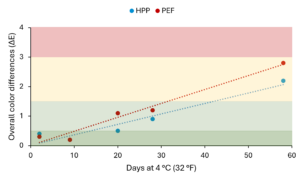
Cloud stability trends reflect the enzymatic effects. In orange juice, PEF-treated samples showed the fastest sedimentation and lowest cloud retention, followed by HPP and then mild thermal pasteurization. Despite achieving only moderate PME inactivation, heat-treated juices maintained superior stability, due to differences in PME isoforms or interactions with other juice components. In apple juice, however, PEF treatment, thanks to its higher PME inactivation due to thermal effects, better preserved cloud stability during storage compared to HPP, which left high residual PME activity and exhibited more pronounced cloud loss (Timmermans et al., 2011).
Color retention typically favors HPP. Across several juice types, HPP-treated samples closely matched the appearance of fresh juice, with minimal changes in lightness, redness, and yellowness. In contrast, PEF often caused noticeable shifts in color, darker tones in orange juice and increased lightness in apple juice, though overall differences (ΔE) generally remained within slightly perceptible levels for consumers.
Technological Constraints and Limitations
PEF application is constrained by its dependence on electrical conductivity, limiting its compatibility with diverse product types. Additionally, ohmic heating during PEF can raise product temperatures, potentially reducing its nonthermal benefits. Its effectiveness against heat-stable enzymes may also be limited, requiring intensities that border on thermal treatment.
HPP requires high capital investment and operates in batch mode, which can limit throughput. Packaging must also withstand extreme pressure without compromising product safety. Despite these constraints, HPP’s ability to process pre-packaged products minimizes contamination risk and ensures uniform treatment. Advances in packaging materials and system design continue to reduce these barriers, enhancing HPP’s operational and economic feasibility.
Industrial Applications and Commercial Viability
HPP has seen widespread commercial adoption, particularly in juice processing, with numerous installations globally. Its proven ability to enhance shelf life, ensure safety, and retain fresh-like quality has made it a trusted solution among food manufacturers and consumers alike. PEF, while promising, remains less mature in industrial applications. Its scale-up challenges, including precise process control and customized equipment, have limited its commercial uptake. Nonetheless, PEF offers potential advantages for continuous processing and lower energy costs.
Conclusion
Both HPP and PEF offer compelling advantages as nonthermal processing technologies, particularly for juice products. PEF excels in enzyme inactivation and continuous operation, but its limitations in microbial stability, conductivity dependence, and color retention reduce its overall versatility.
HPP stands out for its robust microbial inactivation, superior color preservation, and proven commercial viability. Its ability to safely process pre-packaged products and extend shelf life without compromising quality makes it the preferred choice for many applications. As consumer demand for minimally processed, high-quality foods continues to grow, HPP is well-positioned as a leading nonthermal technology in the food industry.



